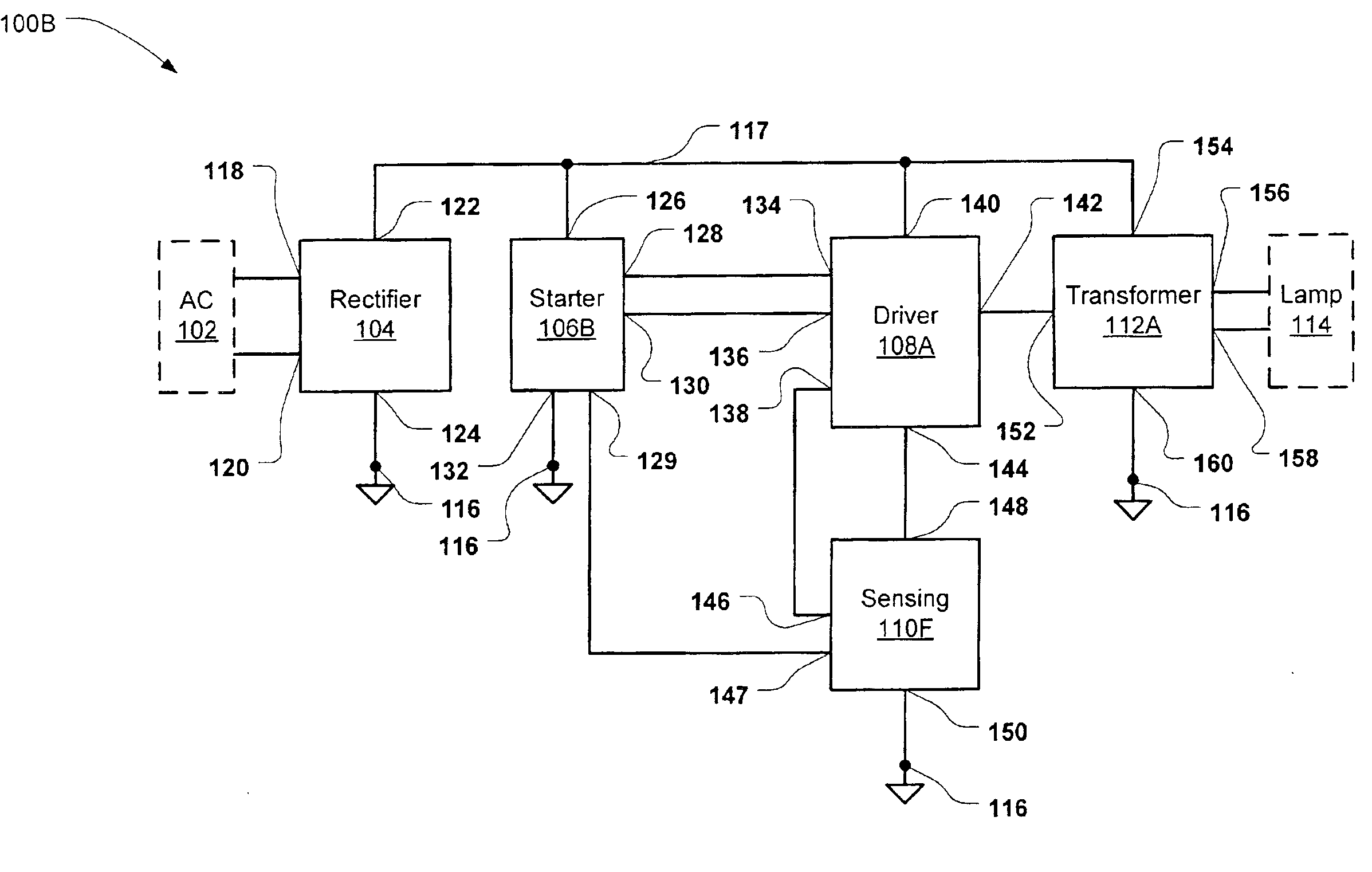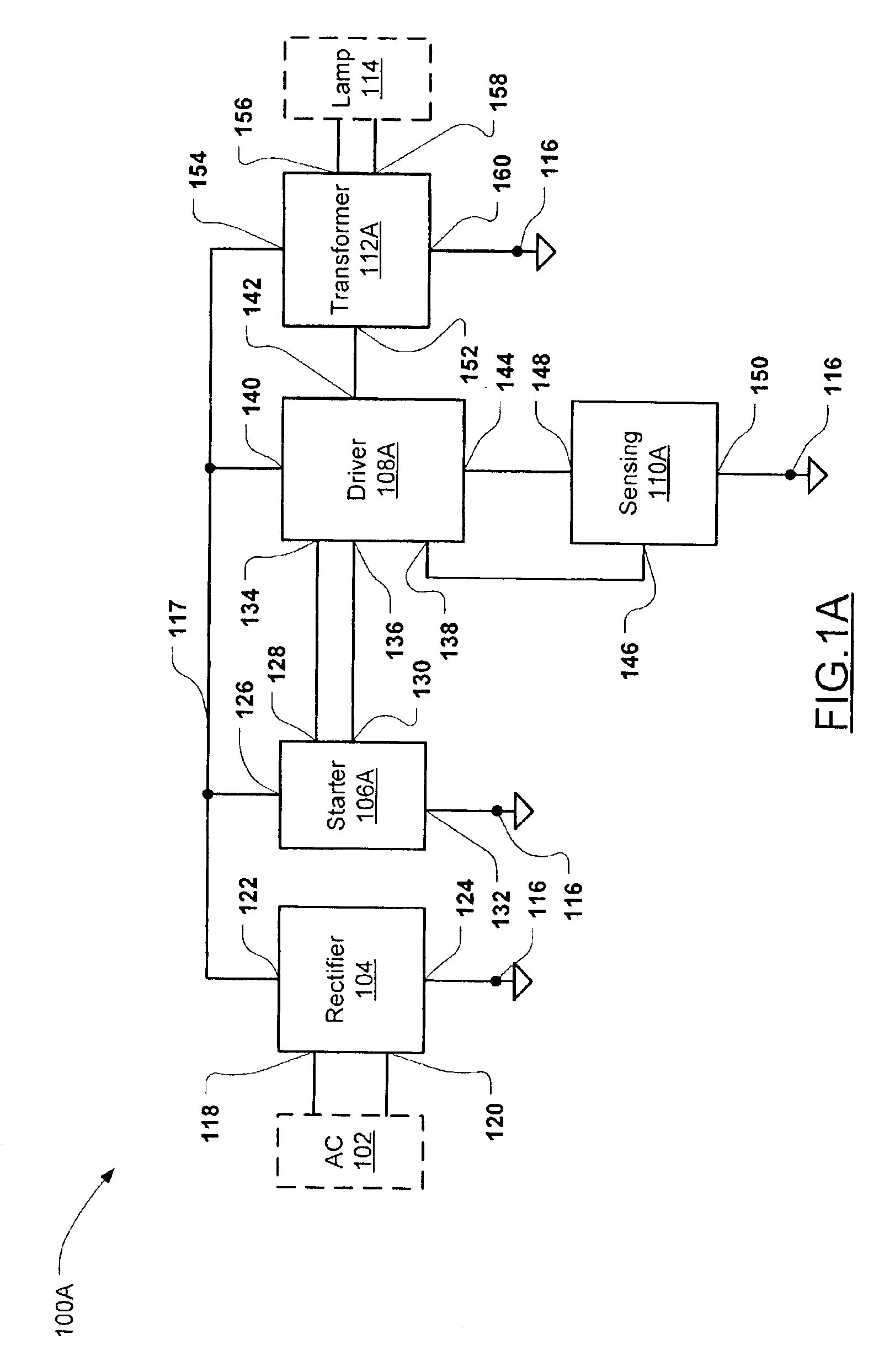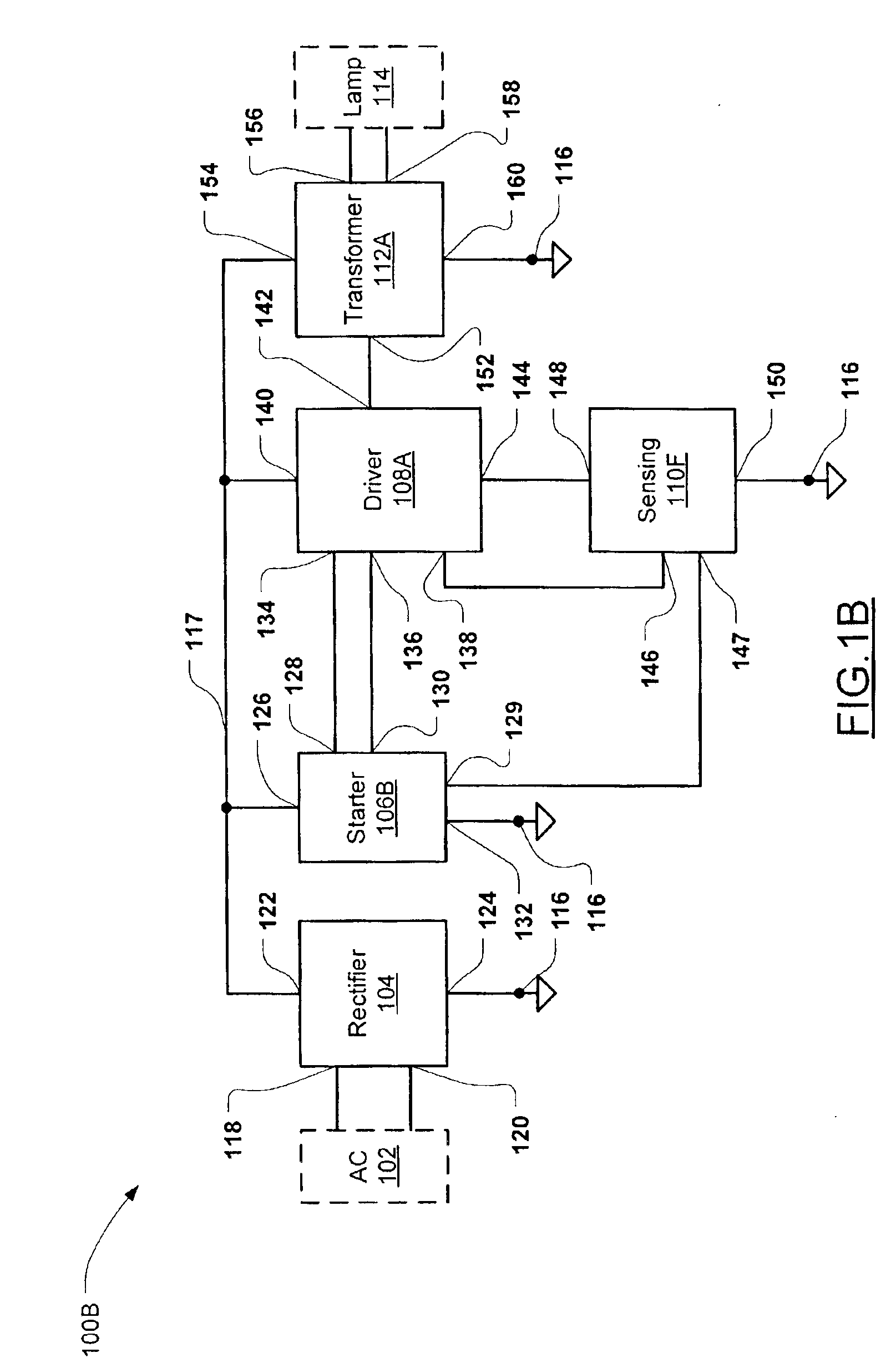Converter for converting an AC power main voltage to a voltage suitable for driving a lamp
a technology of alternating current and power main voltage, which is applied in the direction of light sources, lighting devices, instruments, etc., to achieve the effects of avoiding high-cost tantalum capacitors, precise control of output current, and improved reliability
- Summary
- Abstract
- Description
- Claims
- Application Information
AI Technical Summary
Benefits of technology
Problems solved by technology
Method used
Image
Examples
Embodiment Construction
FIG. 1A illustrates a converter 100A in accordance with the invention. The converter 100 includes a rectifier circuit 104, a starter circuit 106A, a driver circuit 108A, a sensing circuit 110A, and a transformer circuit 112A. The rectifier circuit 104 has a first and second input 118,120 connectable to an AC (alternating current) power main 102 (shown in dotted outline), a first terminal 122 connected to a power supply node 117 and a second terminal 124 connected to a ground reference node 116. The starter circuit 106A has a first terminal 126 connected to power supply node 117, a second terminal 132 connected to ground reference node 116, a clamp output 128, and a starter output 130. The driver circuit 108A has a first output 134 connected to the clamp output 128 of starter circuit 106A, a first input 136 connected to the starter output 130 of starter circuit 106A, a second input 138, a first terminal 140 connected to the power supply node 117, a second output 142 and a second term...
PUM
 Login to View More
Login to View More Abstract
Description
Claims
Application Information
 Login to View More
Login to View More - R&D
- Intellectual Property
- Life Sciences
- Materials
- Tech Scout
- Unparalleled Data Quality
- Higher Quality Content
- 60% Fewer Hallucinations
Browse by: Latest US Patents, China's latest patents, Technical Efficacy Thesaurus, Application Domain, Technology Topic, Popular Technical Reports.
© 2025 PatSnap. All rights reserved.Legal|Privacy policy|Modern Slavery Act Transparency Statement|Sitemap|About US| Contact US: help@patsnap.com



